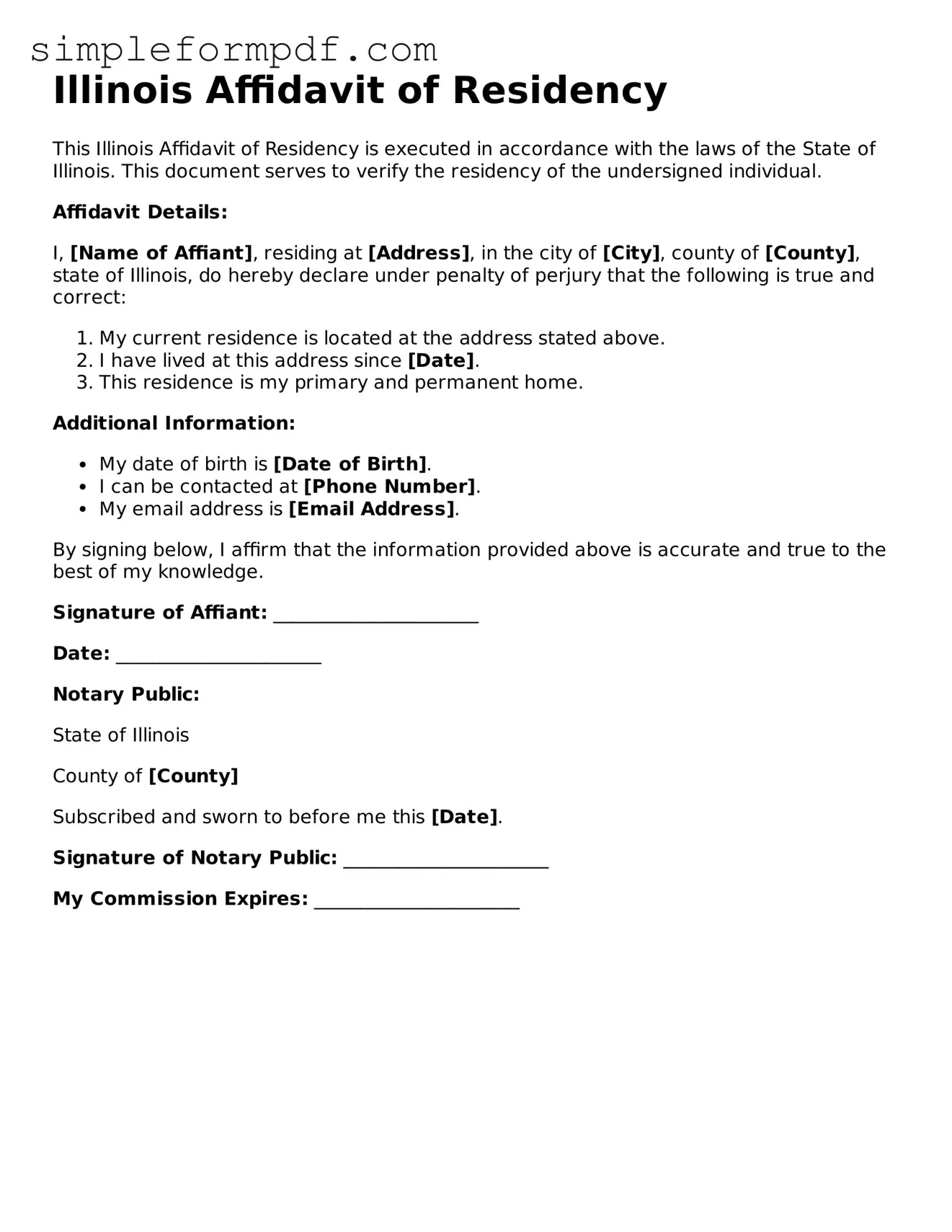Illinois Affidavit of Residency
This Illinois Affidavit of Residency is executed in accordance with the laws of the State of Illinois. This document serves to verify the residency of the undersigned individual.
Affidavit Details:
I, [Name of Affiant], residing at [Address], in the city of [City], county of [County], state of Illinois, do hereby declare under penalty of perjury that the following is true and correct:
- My current residence is located at the address stated above.
- I have lived at this address since [Date].
- This residence is my primary and permanent home.
Additional Information:
- My date of birth is [Date of Birth].
- I can be contacted at [Phone Number].
- My email address is [Email Address].
By signing below, I affirm that the information provided above is accurate and true to the best of my knowledge.
Signature of Affiant: ______________________
Date: ______________________
Notary Public:
State of Illinois
County of [County]
Subscribed and sworn to before me this [Date].
Signature of Notary Public: ______________________
My Commission Expires: ______________________
